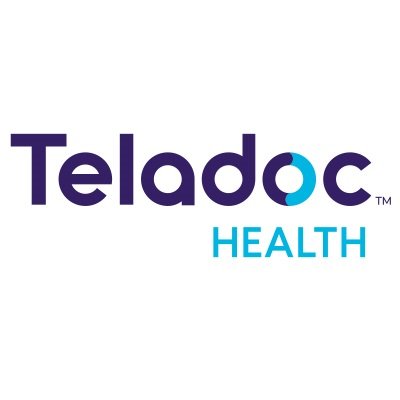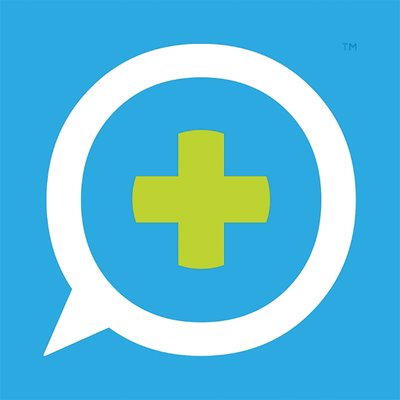Telemedicine allows you to see a doctor from the comfort of your home—or hotel room, or vacation house, or pretty much anywhere else.
Telemedicine and telehealth have extended the reach of top-notch medical expertise to rural areas, people who are homebound, and people who often travel.
The bottom line is there’s never been a better time to see a doctor remotely. Below, we ranked the 10 best telemedicine companies of 2023.
Rankings
1. PlushCare

Click here for more information
PlushCare is a telemedicine service that makes it quick and easy to see a doctor, get a diagnosis, and fill a prescription.
It’s excellent for everything from allergy tests to infections to STD testing to pre-exposure prophylaxis prescriptions for people at risk for contracting HIV.
Plushcare works with with many major insurance providers and is a great choice for rapid and convenient medical care over the phone.
2. ZocDoc

Click here for more information
ZocDoc is great if you need to see a doctor in person, but hate dealing with the hassle of appointment scheduling, insurance coverage, and all of the other administrative hassles that go along with making a doctor’s appointment.
While it was initially open to only residents of New York City, it has expanded nationwide and is now used by over six million people.
Tech visionaries like Jeff Bezos and Peter Thiel invested heavily in ZocDoc, which is a great testament to the value it provides.
3. Forward

Click here for more information
Forward is the Silicon Valley vision of the future of healthcare: combining DNA sequencing, artificial intelligence, and full-body scanning alongside wearable devices for mobile health monitoring and instant access to medical care via a smartphone app.
It’s a subscription-based services that’s currently only for residents near its San Francisco headquarters, but with millions of dollars in funding already secured, it’s on the look for more locations in more cities.
4. Teladoc

Click here for more information
Teladoc is one of the oldest and biggest telemedicine companies on the market.
It’s a hub for getting treatment for a wide range of medical services, from anxiety and depression to skin conditions and acute infections.
With a smartphone, you can be video chatting with a medical doctor in minutes—24 hours a day, anywhere with internet access or cell service. Its versatility and broad range of conditions that can be treated make it a strong choice.
5. Doctor on Demand

Click here for more information
Doctor on Demand is a telemedicine service co-founded by Dr. Phil that’s seen millions of dollars in investment in the last few years, indicating that healthcare industry-watchers see major potential for this company.
The company is one of the most versatile in the industry, with services set up to treat everything from sexual health issues to urgent care, mental health, and chronic conditions like type two diabetes.
With a user base in the millions, it’s one of the fastest-growing and most popular telemedicine companies right now.
6. iCliniq

Click here for more information
Geared for world travellers, iCliniq offers the services of 2,500 doctors for medical consultations and diagnoses from your smartphone.
It’s quite popular among expatriates and those travelling far from home, who don’t want to be forced to rely on the local medical infrastructure wherever they find themselves in the world.
iCliniq is not quite as slick as some of its other competitors, but when you’re travelling out of the country, it’s hard to beat.
7. MDLive

Click here for more information
MDLive is a telemedicine company that excels at treating mild and acute conditions, skin problems, and mental health issues.
It’s particularly popular for its counseling and support services, though you can also get diagnosed and treated for sore throats, ear infections, and eczema.
While it’s a strong pick for remote mental health services, it isn’t the top company on the market when it comes to other medical conditions.
8. MeMD

Click here for more information
MeMD is a services that’s primarily geared towards diagnosing and treating mild and acute conditions like aches, fevers, headaches, and diarrhea.
It’s easy to get treated for these semi-urgent conditions, though if you are primarily looking for coverage for chronic conditions, there are better options out there.
9. Amwell

Click here for more information
Amwell is the direct to patient app and service from American Well, one of the biggest companies in virtual medicine and telehealth.
The Amwell app allows you to video conference with licensed physicians, though the company itself makes it clear that Amwell is primarily intended to be a stop-gap medical service providing diagnoses in between regular doctor’s visits, and not a full replacement for your regular medical provider.
10. MyTelemedicine

Click here for more information
MyTelemedicine is a phone and internet-based telemedicine provider. It’s quite popular and leverages both phone and video conferencing to connect patients with doctors.
The downsides with this company are the actual patient/doctor connection process.
You have to deal with a lot of the same administrative hurdles over the phone as you do with a real doctor’s visit, and it doesn’t provide some of the nice perks that competitors offer, like automated appointment scheduling that adapts to your schedule.
What is Telemedicine?
Telemedicine and telehealth provide medical evaluations, diagnoses, and treatments remotely.
Initial telemedicine services focused on consultations over the phone, but thanks to smartphones and high speed internet connections, the focus has shifted to video calls and remote examinations of things like rashes and other skin conditions thanks to the photo and video capabilities in modern smartphones.
Don’t make the mistake of thinking that telemedicine is only for diagnoses and acute conditions, though—telemedicine companies have expanded to mental health, sexual health, and monitoring chronic conditions like hypertension and type two diabetes.
FAQs
Q: Are telemedicine and telehealth services covered by insurance?
A: As of this writing insurance coverage for telemedicine is still pretty rare. However, a few insurers are including or even encouraging telemedicine for its ability to control costs and provide more active monitoring of chronic health conditions that drive up overall healthcare costs. Determining the reimbursement rate for the doctor is one of the administrative challenges slowing the adoption of broader insurance coverage among telemedicine providers. Still, a number of the top-ranked telemedicine companies do accept insurance, especially those that cover chronic conditions and handle prescriptions.
Q: What kinds of medical conditions cannot be treated by telemedicine?
A: There are a few obvious things, like medical emergencies, broken bones, and the like, that are not suited for telemedicine. And while some psychiatric disorders can be treated via remote therapy sessions, psychiatrists are often limited in what they can prescribe.Some (but not all) telemedicine services also won’t provide services for acute injuries like sprains and strains. As the industry evolves, though, more and more telehealth providers are expanding the range of conditions they cover.
Q: Can telemedicine prescribe medications?
A: Usually, the answer is yes. While you’ll have to get your prescription filled at your own pharmacy, telemedicine service providers can write and fill prescriptions for most of the medications you’d need, with a few exceptions. Opiates and benzodiazepines cannot be acquired via telemedicine as these are tightly controlled substances. However, most non-narcotic pills, creams and ointments, along with treatments for skin conditions, sexually transmitted diseases and more are available.
Q: Is telemedicine covered by Medicare and Medicaid?
A: With regards to Medicare, it’s possible to get some services covered, though there are several criteria that must be met, by the patient, the provider, and the specific service being requested in order for telemedicine services to be covered and reimbursed (1). For Medicaid, the situation is more complex, since Medicaid is administered at the state level. As a result, it’s more difficult (but not impossible) to get specific telemedicine services covered by Medicaid.
Q: Is telemedicine just for doctor’s visits?
A: Telemedicine and telehealth services have quickly expanded to include nutritionists, consulting, and therapists for getting help with everything from obesity (2) to anxiety problems to eating disorders and body image problems (3). This broad range of medical services makes telemedicine well-suited to embrace a broader and more holistic strategy for health.
Q: What are the primary downsides of telemedicine?
A: The biggest drawbacks to telemedicine are its reliance on a fast and stable internet or data connection, the relatively small number of providers participating, and administrative challenges when it comes to dealing with insurance (for some companies at least).
A second limitation is merely the scale of telemedicine: according to trade magazine Healthcare Informatics, only 15 percent of physicians worked for practices that employed telemedicine in any capacity (4). Of these, not all participate in direct to consumer telemedicine.
The last issue with telemedicine—administrative hurdles when dealing with insurance—is also likely to fall to the same rising trend of incentives or requirements for insurers to support telemedicine, as it cuts cost for both providers and for patients.
Recap
Telemedicine is a rapidly growing option for healthcare that offers the convenience of seeing a doctor anywhere from the comfort of your home to a hotel room in a far-away country.
Telemedicine services can provide care for a surprisingly large range of health problems, from assessing acute injuries like a sprained wrist to long-term monitoring of chronic conditions like type two diabetes.
There are a wide range of top-rated telemedicine companies providing great services, ranging from providers that work with insurance companies to subscription-only services that provide personalized medical care via your smartphone.

